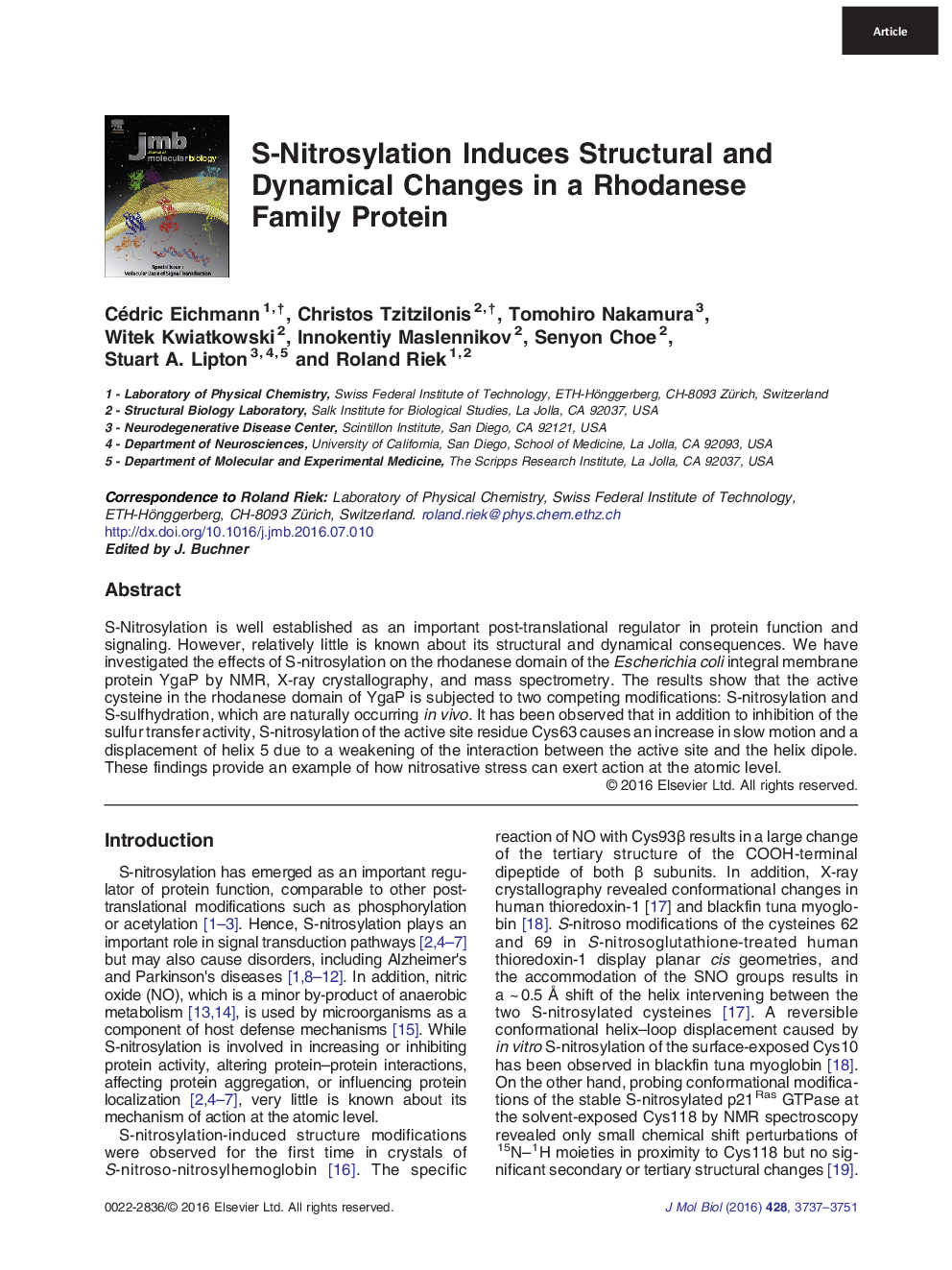| Article ID | Journal | Published Year | Pages | File Type |
|---|---|---|---|---|
| 5532906 | Journal of Molecular Biology | 2016 | 15 Pages |
â¢S-nitrosylation is a common protein modification, but its impact on structure and dynamics is not well understood.â¢The rhodanese domain of YgaP has a rhodanese-typical conformation of the active loop with the catalytic cysteine sandwiched between the N termini of α4 and α5 helices.â¢S-nitrosylation and S-sulfhydration are competing processes in YgaP and both are present when YgaP is overexpressed in E. coli.â¢S-sulfhydration destabilizes helix α4, but under nitrosative stress, the balance shifts toward S-nitrosylation, which induces the slow dynamics of helix α5 while stabilizing α4.
S-Nitrosylation is well established as an important post-translational regulator in protein function and signaling. However, relatively little is known about its structural and dynamical consequences. We have investigated the effects of S-nitrosylation on the rhodanese domain of the Escherichia coli integral membrane protein YgaP by NMR, X-ray crystallography, and mass spectrometry. The results show that the active cysteine in the rhodanese domain of YgaP is subjected to two competing modifications: S-nitrosylation and S-sulfhydration, which are naturally occurring in vivo. It has been observed that in addition to inhibition of the sulfur transfer activity, S-nitrosylation of the active site residue Cys63 causes an increase in slow motion and a displacement of helix 5 due to a weakening of the interaction between the active site and the helix dipole. These findings provide an example of how nitrosative stress can exert action at the atomic level.
Graphical AbstractDownload high-res image (155KB)Download full-size image
